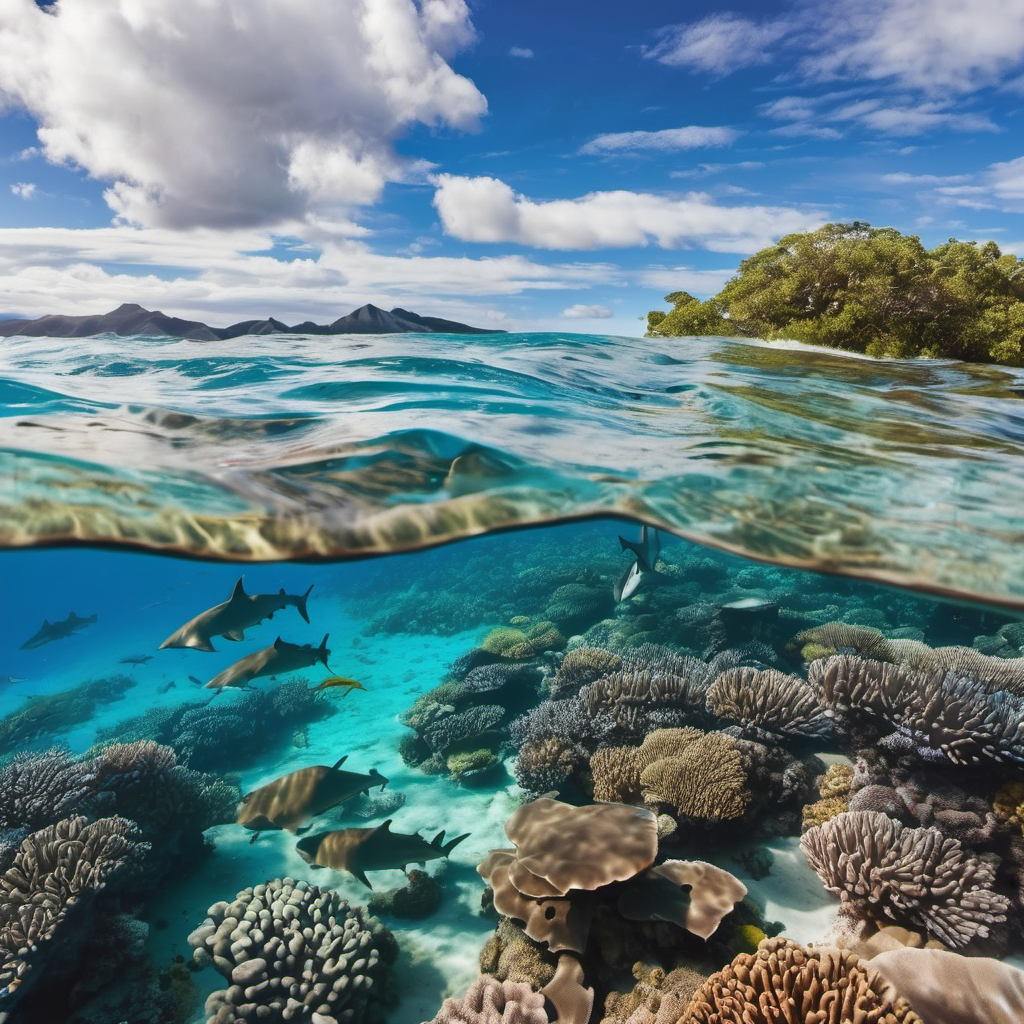
Swimming with Sharks in the Great Barrier Reef: An Unforgettable Australian Adventure:
Introduction:
Swimming with sharks in the Great Barrier Reef is an adventure that stirs the soul, challenges preconceptions, and offers a glimpse into the profound beauty of the natural world. This exhilarating experience not only brings you face-to-face with one of the ocean’s most respected inhabitants but also highlights the importance of these creatures to the marine ecosystem.
The Thrill of the Encounter:
For many, the very idea of swimming with sharks invokes a mix of fear and fascination. The Great Barrier Reef, a world heritage site and one of the planet’s most extraordinary natural wonders, provides a safe and sustainable environment to have these encounters. With species like the reef shark, which are generally non-aggressive towards humans, divers can experience the serene presence of these animals in their natural habitat.
Preparing for the Dive:
The adventure begins long before you enter the water. Diving with sharks requires careful preparation and respect for the marine environment. Divers are briefed on safety procedures, shark behavior, and the importance of conservation. Gear is meticulously checked to ensure that everything is in perfect working order, providing comfort and safety during the dive.
Guided Tours:
Professional dive operators on the Great Barrier Reef offer guided shark dives that cater to all experience levels, from beginners to seasoned divers. These tours are led by experienced divers who are knowledgeable about shark behavior and the specific conditions of the reef. Guides help divers understand the movements and space of the sharks, ensuring a respectful distance is maintained, minimizing stress for the animals, and enhancing safety for the participants.
The Dive Experience:
Descending into the clear waters of the reef, the ocean’s hues shift from bright light blues to the deep, mesmerizing blues of the underwater world. As your eyes adjust, shapes begin to materialize, and soon, the sleek, streamlined forms of sharks become apparent. The sharks may circle curiously, their powerful bodies gliding effortlessly through the water, their eyes watchful yet seemingly calm. The experience is not just about thrill-seeking; it’s about appreciation and connection with these misunderstood creatures.
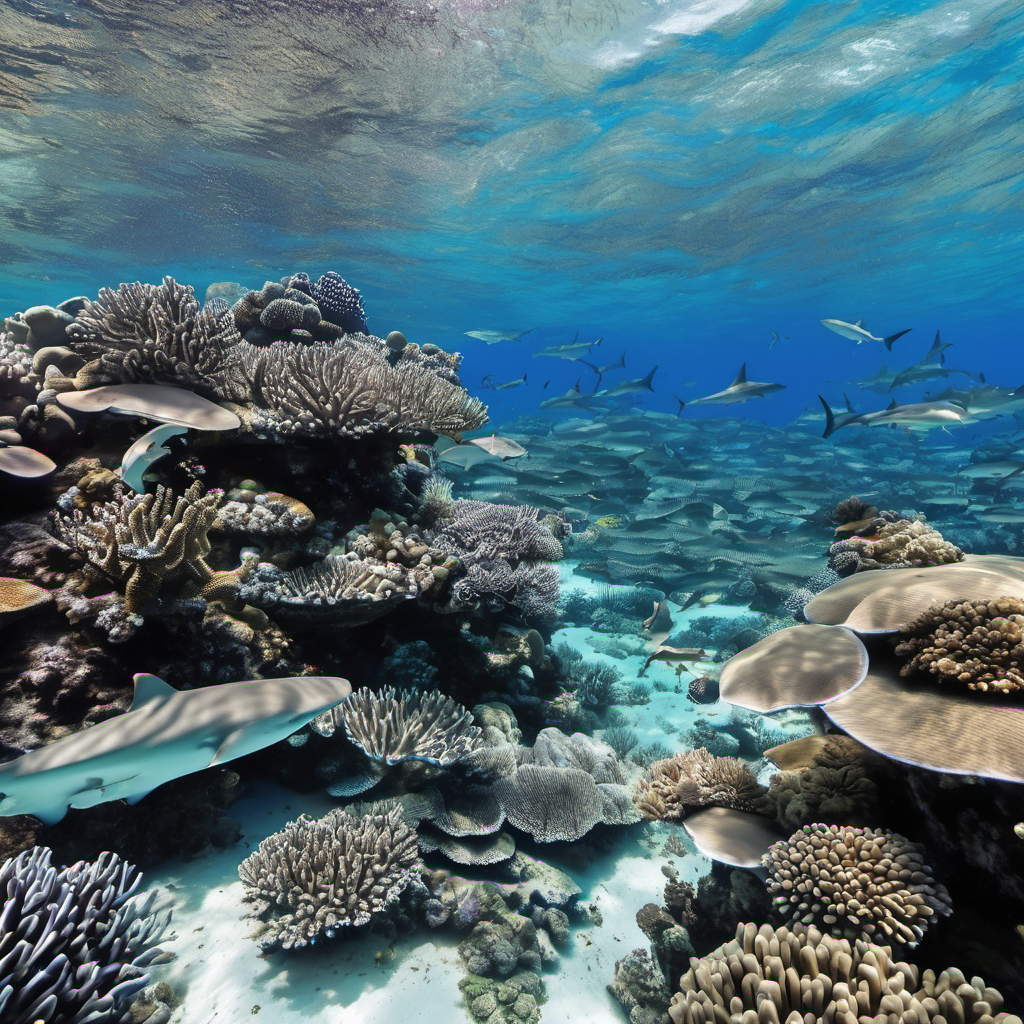
Educational Value:
Swimming with sharks offers more than just an adrenaline rush; it provides valuable educational insights. Divers learn about the different species of sharks, their roles in the marine ecosystem, and the issues they face, such as habitat destruction and the impacts of climate change. This knowledge fosters a deeper respect and commitment to marine conservation efforts.
Conservation and Ethical Considerations:
Shark diving tours are not just recreational activities but also play a part in conservation efforts. By choosing responsible tour operators, divers contribute to businesses that prioritize the well-being of wildlife and support research and conservation initiatives. Many operators participate in data collection for scientific studies, helping to track shark populations and health, which in turn informs conservation policies.
The Aftermath of the Dive:
After resurfacing, the mix of exhilaration and contemplation is palpable. Divers often feel a changed perception of sharks, moving from fear to admiration and respect. This transformative experience highlights the importance of sharks to the ocean’s biodiversity and encourages ongoing support for marine conservation.
Swimming with sharks in the Great Barrier Reef is a profound reminder of our place within the earth’s vast ecosystems. It challenges divers to confront their fears, promotes understanding and respect for one of nature’s most perfect predators, and underscores the urgent need for conservation of our planet’s precious marine environments. This adventure is not just a dive; it’s an immersive education in the majesty and vulnerability of the natural world.
Culinary Delights: Top 10 Restaurants in Australia:
What’s better after a day in the ocean than indulging in Australia’s finest flavors? Australia’s culinary scene is a vibrant tapestry of flavors, showcasing a blend of indigenous ingredients, multicultural influences, and bold culinary innovation. From the bustling cities to the serene countryside, the nation’s top restaurants offer unforgettable dining experiences that are as diverse as the landscape itself. Here’s a closer look at ten of the best restaurants across Australia, each delivering its own unique blend of atmosphere, creativity, and culinary excellence.
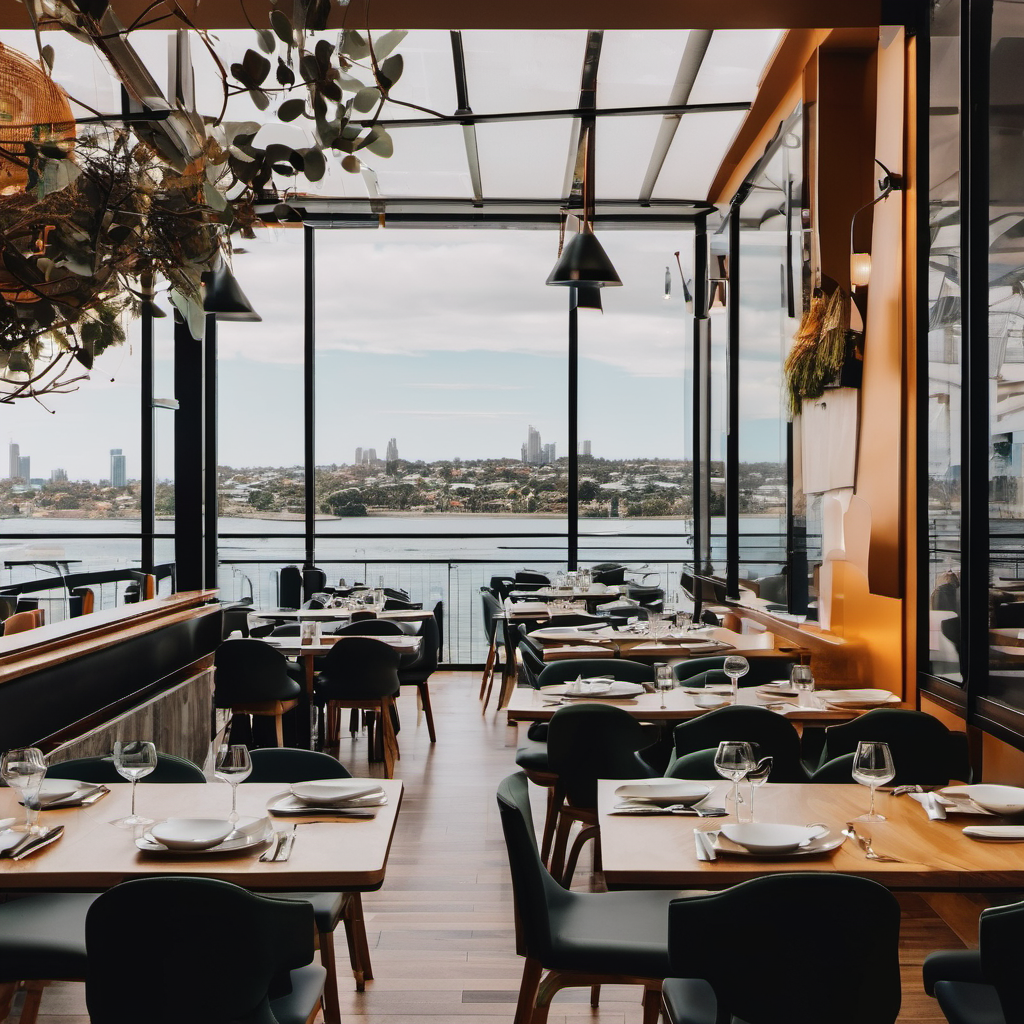
1. Quay, Sydney:
Perched on Sydney Harbour, Quay is not only celebrated for its iconic views of the Opera House and the Harbour Bridge but also for its sophisticated menu. Under the guidance of Chef Peter Gilmore, the restaurant offers dishes that are a testament to Australian ingredients, with specialties like the oyster intervention and the famed snow egg dessert. Dining here is an experience that encapsulates the essence of Sydney’s luxurious and innovative dining scene.
2. Attica, Melbourne:
Located in the suburbs of Melbourne, Attica is Chef Ben Shewry’s homage to Australian culture and natural produce. The restaurant crafts an intimate narrative with each dish, using indigenous ingredients often overlooked in traditional culinary practices. Highlights include a series of courses that reflect deep storytelling and respect for the land, such as the “A Simple Dish of Potato Cooked in the Earth It Was Grown.”

3. Bennelong, Sydney:
Housed within the sails of the Sydney Opera House, Bennelong presents a stage of its own, where Chef Peter Gilmore’s creations shine against a backdrop of architectural marvel. The menu offers a spectrum of dishes from redefined Australian classics to modern concoctions, ensuring a symphonic dining experience that pairs flawlessly with the cultural heart of Australia.
4. GOMA Restaurant, Brisbane:
Situated within the Queensland Art Gallery & Gallery of Modern Art, GOMA Restaurant integrates artful presentation with culinary delight. The menu is a canvas, featuring seasonal and local ingredients that tell a story through each course, curated to complement the artistic surroundings and stimulate both the palate and the mind.
5. Fervor, Various Locations:
A truly nomadic dining experience, Fervor pops up in various unexpected locations across Australia, from remote beaches to ancient forests. Chef Paul Iskov’s commitment to native Australian ingredients and traditional cooking methods offers diners a unique, place-based tasting menu that changes with the seasons and locations.
6. Orana, Adelaide:
In Adelaide, Restaurant Orana stands as a testament to the sophistication of native Australian ingredients. Chef Jock Zonfrillo offers a tasting menu that respects and elevates indigenous culture and cuisine, showcasing ingredients such as kangaroo, finger lime, and Davidson plum in a modern gastronomic context.
7. Tetsuya’s, Sydney:
Tetsuya Wakuda’s eponymous restaurant offers a blend of Japanese and French cuisines in a serene city garden backdrop. The degustation menu is famous for its precision and purity, featuring signature dishes like the confit of Petuna ocean trout with a kelp salad that has been hailed as a culinary masterpiece.
8. Brae, Birregurra:
Nestled in the lush countryside of Victoria, Brae is a culinary retreat where Chef Dan Hunter focuses on sustainable farming and the restaurant’s connection to its land. The dishes, crafted from the produce grown on-site, offer a fresh, ethical, and local dining experience that pushes the boundaries of farm-to-table dining.
9. Momofuku Seiōbo, Sydney:
Under the helm of Chef Paul Carmichael, Momofuku Seiōbo brings Caribbean influences meshed with Australian ingredients to the forefront. This dynamic and playful menu, heavily influenced by the chef’s Barbadian roots, provides a lively and flavorful dining experience unlike any other in Australia.
10. The Agrarian Kitchen Eatery, New Norfolk:
Located in a repurposed mental asylum in Tasmania, The Agrarian Kitchen Eatery celebrates local produce in its purest form. The menu is a reflection of the region’s rich bounty, sourced from local farms and the restaurant’s own garden, providing a rustic yet refined taste of Tasmania’s best.
These top ten restaurants not only represent the pinnacle of Australian dining but also reflect the country’s rich cultural tapestry and commitment to culinary excellence. Each restaurant offers a unique story told through its dishes, making a meal at any of these locations not just about eating, but about experiencing the depth and breadth of Australian cuisine.
Top 15 Things to Do in Australia: A Guide to Unforgettable Experiences:
Australia is a vast and varied land, offering a rich tapestry of experiences that cater to every taste and interest. From its stunning natural wonders to its vibrant cities, here’s an expanded look at the top 15 things to do in Australia, each offering a unique insight into this dynamic country.
1. Explore the Daintree Rainforest:
Venture into the ancient Daintree Rainforest in Queensland, a UNESCO World Heritage site that is part of the oldest continually surviving tropical rainforest in the world. Here, visitors can walk through lush greenery, spot exotic wildlife, and learn about the indigenous Kuku Yalanji people’s culture and history.
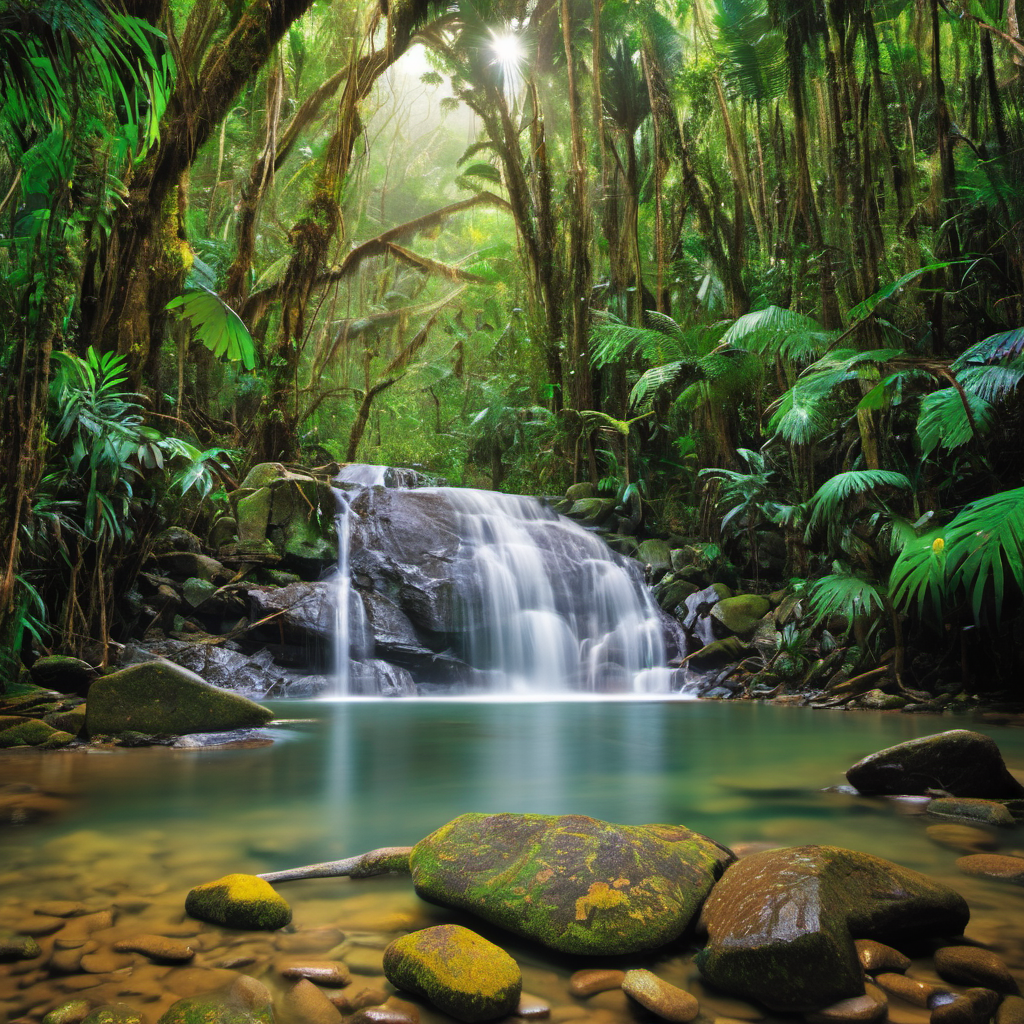
2. Surf at Bondi Beach
Catch a wave or simply soak up the sun at Sydney’s iconic Bondi Beach. Known for its golden sands and lively atmosphere, Bondi is not just a beach but a cultural phenomenon, bustling with surfers, swimmers, and those just wanting to enjoy the coastal vibe.
3. Attend a Performance at the Sydney Opera House:
Experience world-class opera, theater, or music at the Sydney Opera House. This architectural marvel not only offers top-tier performances but also provides guided tours that reveal the history and inner workings of this iconic building.
4. Hike the Blue Mountains:
Just outside Sydney, the Blue Mountains offer dramatic scenery, rugged cliffs, and lush eucalyptus forests. The area is perfect for hiking, rock climbing, and exploring the numerous waterfalls and trails, including the famous Three Sisters rock formation.
5. Wine Tasting in the Barossa Valley:
Indulge in some of Australia’s finest wines in the Barossa Valley, South Australia. Known for its Shiraz, the region offers numerous wineries where visitors can taste and learn about the wine-making process amidst stunning vineyard landscapes.
6. Visit Uluru:
Marvel at the majestic Uluru (Ayers Rock), a large sandstone rock formation in the heart of the Northern Territory’s arid “Red Centre.” The site is sacred to indigenous Australians and is surrounded by springs, rock caves, and ancient paintings.
7. Tour MONA in Hobart, Tasmania:
Explore the Museum of Old and New Art (MONA) in Hobart, Tasmania. This underground museum is known for its avant-garde design and controversial exhibits, offering a refreshing perspective on both ancient and contemporary art.
8. Drive the Great Ocean Road:
Take a scenic drive along the Great Ocean Road in Victoria. This picturesque route offers stunning ocean views, access to pristine beaches, lush rainforests, and the famous Twelve Apostles limestone stack formations.
9. See Wildlife on Kangaroo Island:
Just off the coast of South Australia, Kangaroo Island is a sanctuary for wildlife. It’s an excellent place to see kangaroos, koalas, and a variety of birds in their natural habitats, along with remarkable natural rock formations like the Remarkable Rocks.
10. Sunset Camel Ride in Cable Beach:
Experience a breathtaking sunset over Cable Beach in Broome, Western Australia, by taking a camel ride along the beach. This picturesque experience offers a unique way to enjoy one of Australia’s most beautiful coastal stretches.
11. Explore Fremantle Prison:
Dive into history with a tour of Fremantle Prison in Western Australia. This former prison offers insights into the life of inmates through guided tours that include visits to the cell blocks, solitary cells, and execution chamber.
12. Visit Pink Lake (Lake Hillier):
See the stunning Pink Lake (Lake Hillier) on Middle Island, off the coast of Western Australia. Famous for its vivid pink color, caused by algae in the water, the lake offers spectacular photo opportunities and is best viewed from above on a scenic flight.
13. Snorkel in Ningaloo Reef:
Swim alongside whale sharks and explore vibrant coral reefs in Ningaloo Reef, Western Australia. This UNESCO World Heritage site is less crowded than the Great Barrier Reef but just as spectacular, with accessible coral gardens from the shore.
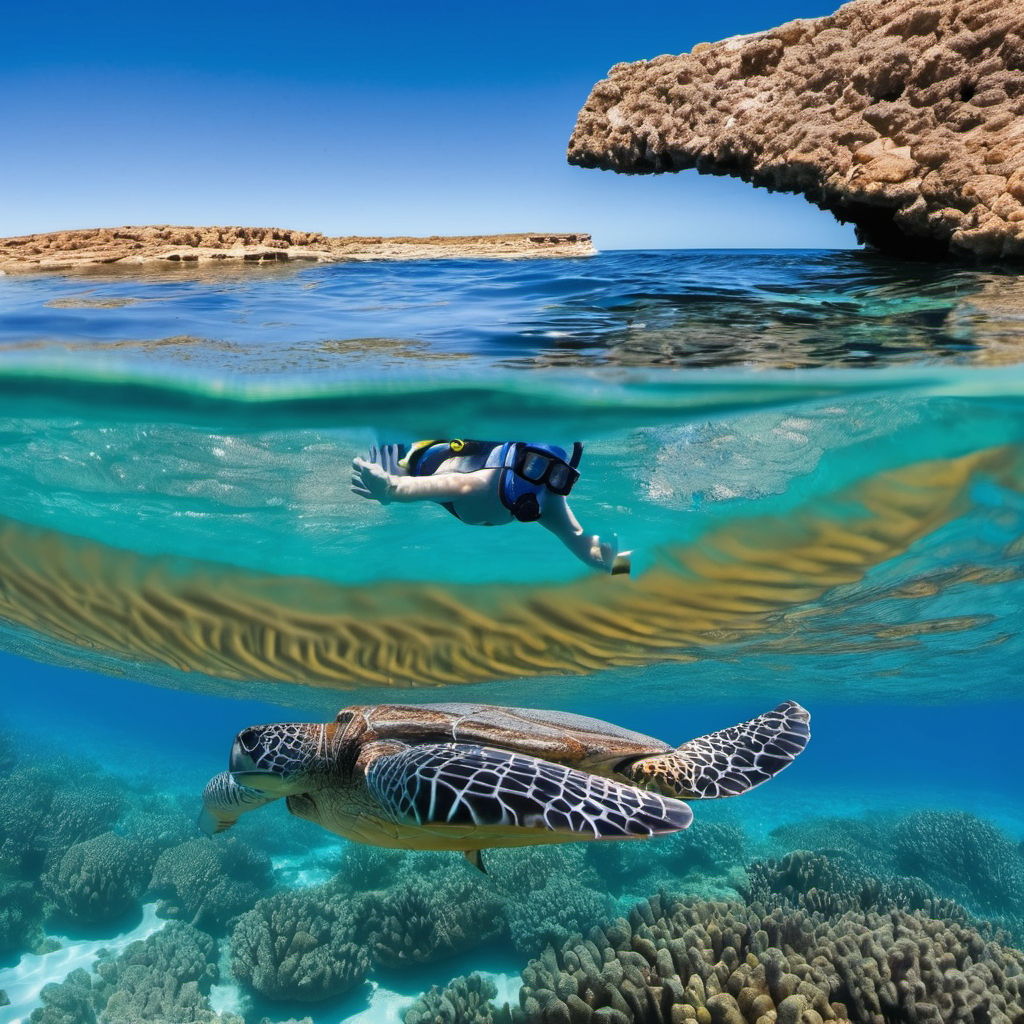
14. Experience Melbourne’s Laneway Culture:
Dive into Melbourne’s vibrant laneway culture, exploring hidden cafes, graffiti-lined streets, and boutique shops. The city’s laneways are buzzing with creativity and are an essential part of Melbourne’s urban charm.
15. Relax in a Daylesford Spa:
Finally, unwind in the spa town of Daylesford, Victoria. Known for its mineral springs, the area offers luxurious spa treatments, organic eateries, and quaint boutiques, making it the perfect destination to relax and rejuvenate.
From natural wonders and outdoor adventures to cultural experiences and culinary delights, Australia offers a diverse range of activities that promise to make any visit unforgettable. Each experience provides a deeper understanding of this
Family Fun: Things to Do with Kids in Australia:
Australia is a fantastic destination for families, boasting a wide array of child-friendly activities that cater to all ages and interests. From thrilling theme parks to interactive museums and natural wonders, here’s an expanded guide to some of the best family activities across the country that promise fun, education, and adventure.
1. Visit Gold Coast Theme Parks:
The Gold Coast is renowned for its thrilling theme parks, making it a must-visit destination for families. Parks like Dreamworld, Movie World, and Sea World offer a variety of rides, shows, and attractions that cater to both young children and thrill-seeking teenagers. Whether it’s meeting beloved movie characters, experiencing high-speed roller coasters, or observing marine life up close, there’s something for everyone.
2. Explore the Great Barrier Reef:
Take the family on an unforgettable snorkeling or diving trip to the Great Barrier Reef. Operators offer family-friendly tours that include equipment and safety briefings, ensuring even first-timers can enjoy the beauty of the coral reefs safely. For younger children or those who prefer to stay dry, glass-bottom boat tours and semi-submersible vessels provide a glimpse into the vibrant underwater world without getting wet.
3. Discover Interactive Museums:
Australia has a plethora of museums with interactive exhibits that engage children while educating them. The Melbourne Museum and Sydney’s Powerhouse Museum feature hands-on displays that cover topics from science and technology to history and culture. Special workshops and educational programs are often available to enhance the learning experience.
4. Adventure in National Parks:
With its vast array of national parks, Australia offers countless opportunities for families to enjoy nature together. In Tasmania, Cradle Mountain-Lake St Clair National Park offers easy walks that suit young children, with the chance to see wildlife like wombats and echidnas. On the mainland, Grampians National Park provides more challenging hikes and stunning views of ancient rock formations.
5. Enjoy Festivals and Events:
Australia hosts a variety of family-friendly festivals and events throughout the year, which are perfect for making lasting memories. The Royal Melbourne Show and the Sydney Royal Easter Show offer agricultural displays, rides, and tasty treats. During the school holidays, many cities host children’s festivals with workshops, performances, and art installations tailored to younger audiences.
6. Animal Encounters :
Zoos and wildlife parks across Australia provide kids with the chance to see and sometimes interact with native Australian animals. The famous Australia Zoo in Queensland, founded by Steve Irwin’s family, offers educational shows and close-up animal encounters. Meanwhile, Phillip Island in Victoria is known for its nightly penguin parade, where visitors can watch little penguins return ashore after a day of fishing.
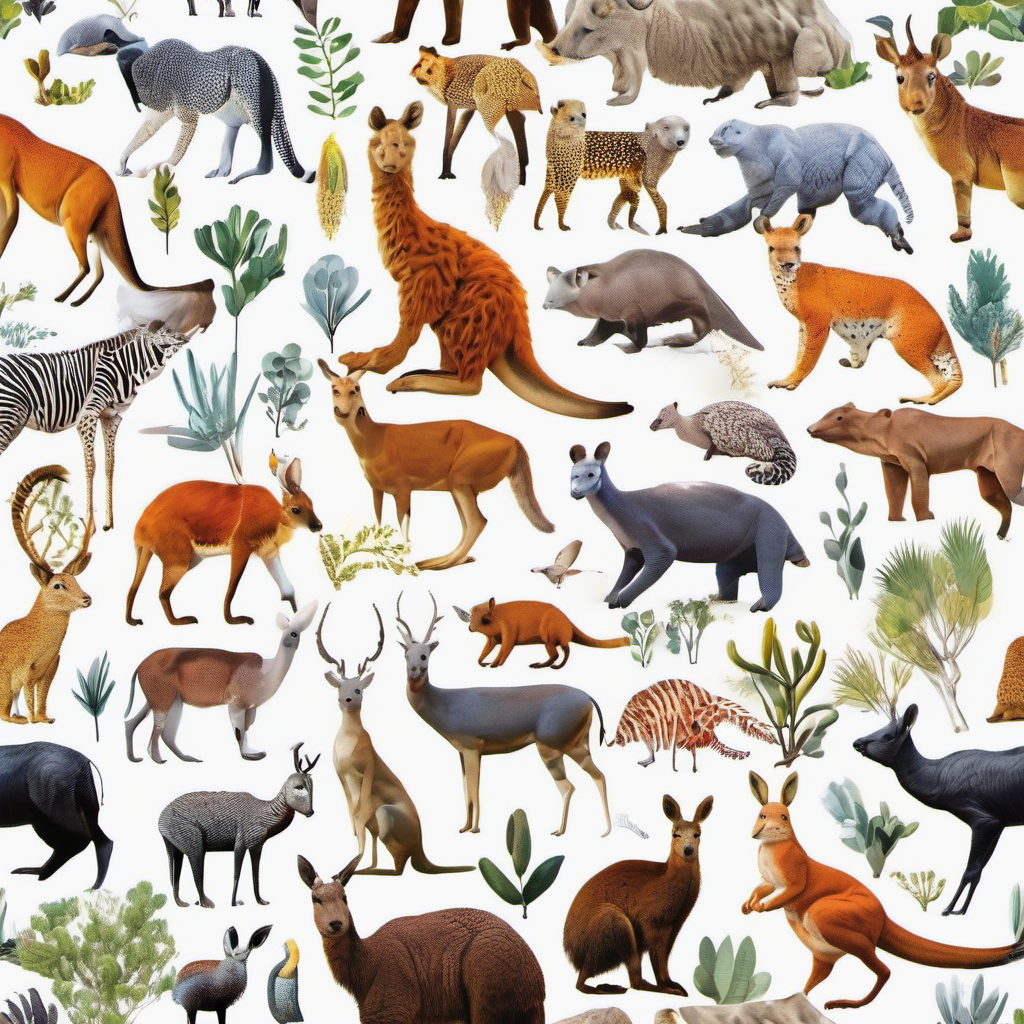
7. Spend a Day at the Beach:
Australia’s beaches are iconic and generally family-friendly, with gentle waves and lifeguard patrols at popular spots. Building sandcastles, swimming, and simply relaxing by the sea can make for a perfect family day out. Bondi Beach in Sydney and St Kilda Beach in Melbourne provide nearby playgrounds and eateries.
8. Climb the Sydney Harbour Bridge:
For families with older children, climbing the Sydney Harbour Bridge offers a thrilling adventure with panoramic views of Sydney and the harbor. The climb is safe and guided, providing an exciting experience that children will remember for a lifetime.
9. Visit a Farm or Orchard:
Participate in farm stays or visit working farms and orchards where children can pick their own fruits, feed farm animals, and learn about where food comes from. Places like the Sunshine Coast hinterland offer farm experiences with a variety of animals and crops, providing a fun and educational day out.
10. Educational Wildlife Tours:
Consider taking a wildlife tour in places like Kangaroo Island or the Daintree Rainforest. These tours often focus on education and conservation, helping children learn about biodiversity and the importance of protecting natural habitats.
With its diverse attractions ranging from cultural institutions and natural wonders to fun-filled parks and unique wildlife, Australia offers myriad opportunities for family fun. These activities not only entertain but also educate, making them perfect for a family holiday that will be cherished for years to come. Whether exploring the outdoors or learning new things together, there’s something in Australia for every family to enjoy.
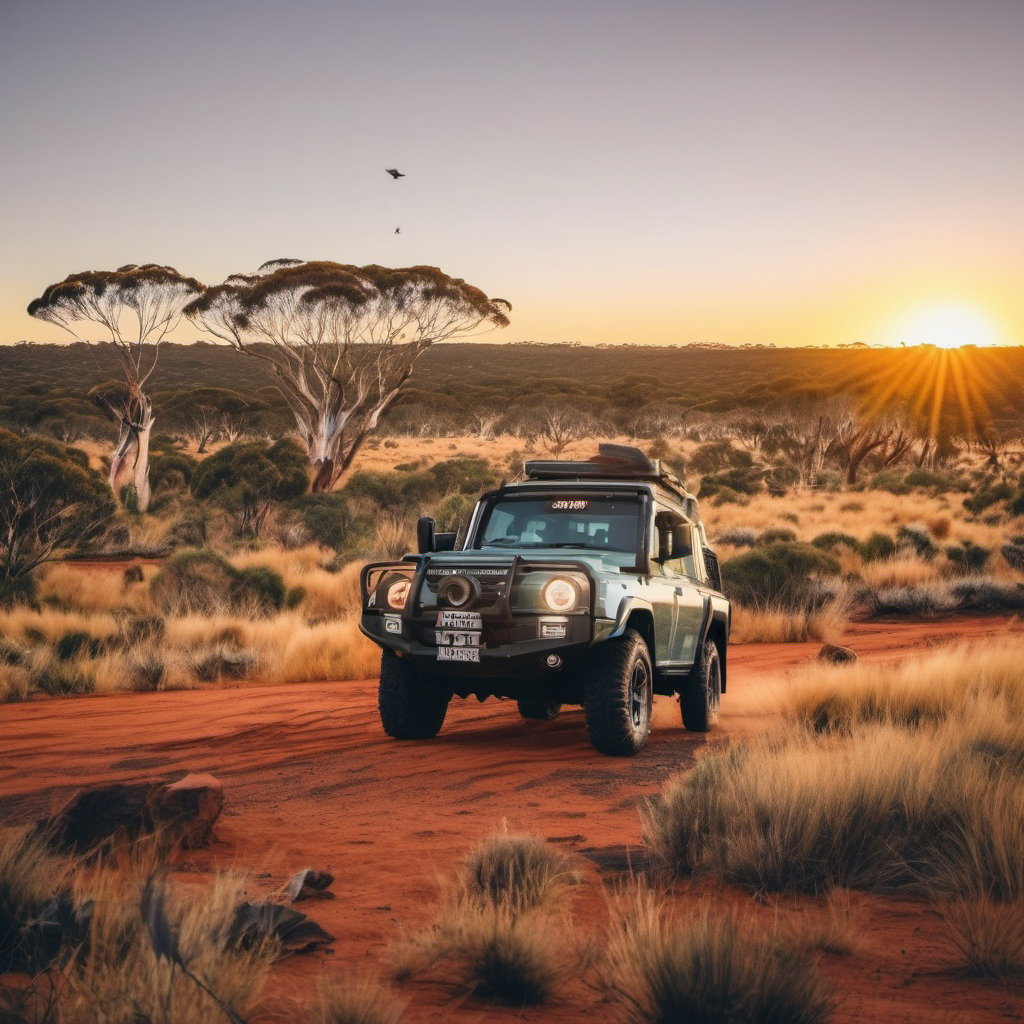
Romance Down Under: Activities for Couples in Australia:
Australia offers a multitude of romantic experiences, perfect for couples seeking to create memorable moments together. From stunning natural landscapes to vibrant city scenes, here’s an expanded guide to the best romantic activities across the continent that cater to lovebirds looking for adventure, relaxation, or just a special time together.
1. Dine Under the Stars in the Outback:
Experience the magic of the Australian Outback under a blanket of stars. Couples can enjoy a unique dining experience at places like Uluru or the Kimberley, where the silence and vastness of the landscape create a stunning backdrop for a romantic evening. Dining experiences such as the “Sounds of Silence” dinner offer gourmet meals featuring local ingredients, accompanied by indigenous storytelling and stargazing sessions.
2. Private Wine Tasting in Hunter Valley:
Hunter Valley, just north of Sydney, is Australia’s oldest wine region and offers a plethora of wineries perfect for a romantic getaway. Couples can indulge in private wine tasting tours, which often include cellar door visits and tastings of award-winning wines. Many wineries also host gourmet restaurants where you can enjoy a long lunch overlooking the vineyards.
3. Stroll Through the Royal Botanic Gardens:
In cities like Melbourne and Sydney, the Royal Botanic Gardens provide a peaceful escape from the urban hustle. Couples can take a leisurely stroll through lush landscapes, enjoy a picnic by the lake, or simply relax under the shade of a tree. The gardens also offer guided walks and special events such as outdoor cinema nights during the summer.
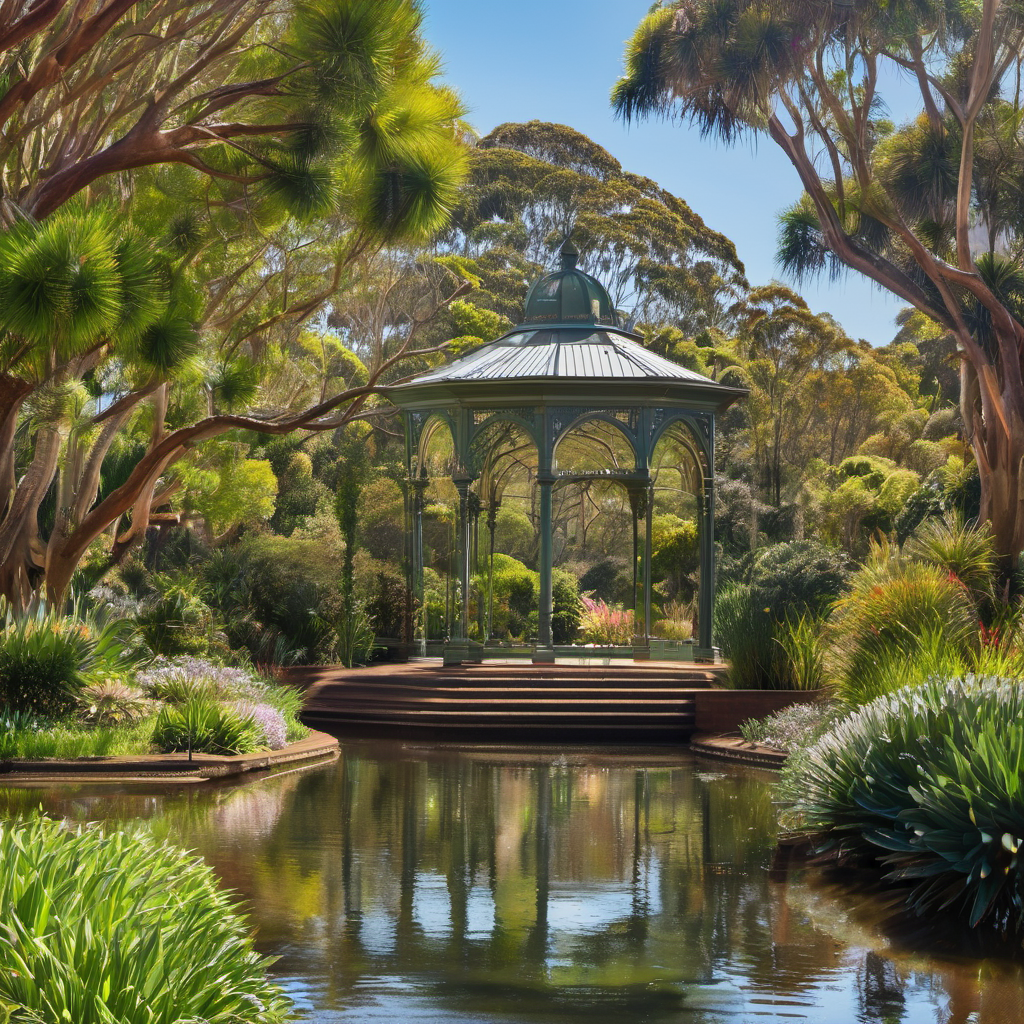
4. Experience Vibrant Nightlife and Nightclubs:
For couples who enjoy the nightlife, cities like Sydney and Melbourne offer vibrant scenes with a variety of options from rooftop bars to beachfront clubs. In Sydney, try the Opera Bar for spectacular views of the Harbour Bridge and Opera House, or explore the hidden laneway bars in Melbourne’s CBD for a more intimate experience.
5. Take a Sunset Cruise Around Sydney Harbour:
A cruise around Sydney Harbour at sunset offers a magical experience, with stunning views of the iconic Sydney Opera House and Harbour Bridge. Many cruises offer gourmet meals and live music, creating a romantic atmosphere as you glide past the city lights.
6. Relax in a Day Spa in Daylesford:
Daylesford is known for its natural mineral springs and luxurious spas, making it a perfect retreat for couples. Spend a day or a weekend indulging in spa treatments, thermal baths, and relaxation therapies. Many spa resorts also offer romantic accommodation, complete with fireplaces and private balconies.
7. Explore the Whitsunday Islands:
For a tropical escape, head to the Whitsunday Islands on the Great Barrier Reef. Couples can charter a private yacht, explore secluded beaches, and snorkel in the coral-rich waters. Overnight stays on islands like Hamilton or Hayman offer luxury accommodations with stunning ocean views.
8. Watch Sunrise from a Hot Air Balloon:
Floating in a hot air balloon over the landscapes of the Hunter Valley, Yarra Valley, or even the Outback provides a serene and romantic start to the day. Watching the sunrise from above, with a champagne breakfast waiting upon landing, is a breathtaking experience for any couple.
9. Take a Scenic Drive Along the Great Ocean Road:
Rent a convertible and take a scenic drive along the Great Ocean Road in Victoria. This famous coastal route offers dramatic ocean views, charming beach towns, and access to remote beaches where couples can enjoy some privacy surrounded by nature.
10. Cuddle a Koala in Queensland:
For wildlife-loving couples, a visit to a sanctuary like Lone Pine Koala Sanctuary near Brisbane allows for a unique experience: cuddling a koala. This memorable encounter, combined with the chance to feed kangaroos and see other native animals, adds a uniquely Australian touch to any romantic trip.
Whether it’s enjoying natural wonders, indulging in culinary delights, or simply soaking up the vibrant culture, Australia offers a plethora of romantic activities for couples. These experiences not only strengthen bonds but also create lasting memories that couples will cherish throughout their lives
A Glimpse into Australia's History: Past and Present:
Australia’s history is a rich and complex tapestry woven with the threads of ancient indigenous cultures, European colonization, and modern developments that have shaped the nation into a vibrant, diverse society. Understanding this history offers deep insights into the Australian identity and its evolution over the centuries.
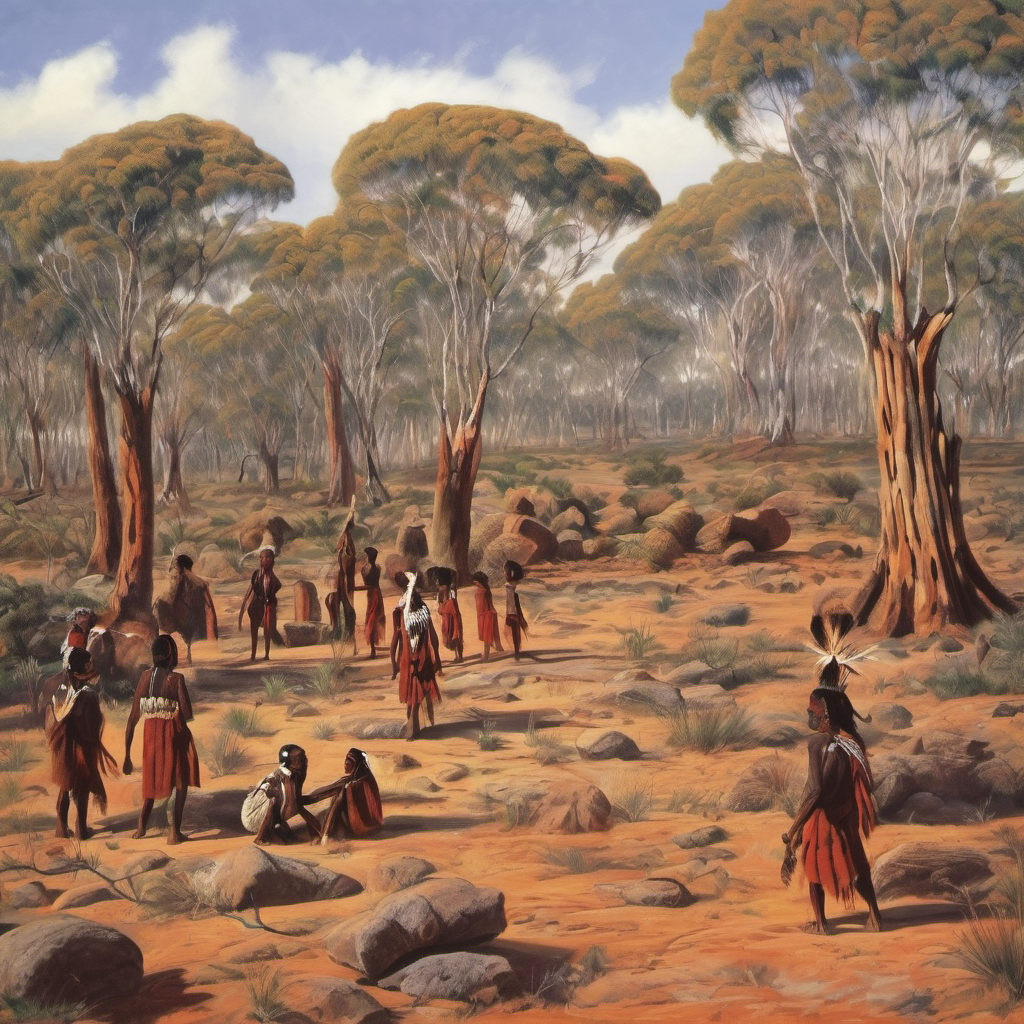
Ancient Indigenous Cultures:
Australia’s history begins with its indigenous peoples, who have inhabited the continent for at least 65,000 years. The Aboriginal and Torres Strait Islander cultures are among the oldest living cultural histories in the world. These cultures are incredibly diverse, with over 250 languages and 500 different clans at the time of European contact. Indigenous Australians have a profound connection to the land, which is central to their spiritual identity, traditions, and customs. Their rich heritage is reflected in their art, storytelling, and cultural practices, which continue to play a vital role in Australia’s national identity.
European Exploration and Colonization:
The first documented European sighting of Australia was by the Dutch navigator Willem Janszoon in 1606. However, it was Captain James Cook’s voyage in 1770 that marked the beginning of intense European interest in the continent. Cook charted the eastern coast and claimed the land for Great Britain under the name New South Wales. This led to the establishment of a British penal colony in 1788, with the arrival of the First Fleet in Port Jackson, modern-day Sydney. The impact of colonization on the indigenous population was catastrophic, leading to displacement, disease, and large-scale loss of life.
The Gold Rush and Development:
The 1850s gold rushes were a significant period in Australian history, transforming the economy and society. Cities such as Melbourne grew rapidly, and the influx of migrants from around the world brought a diversity that has continued to characterize Australian society. The wealth generated by the gold rush led to greater calls for self-governance, culminating in the federation of the Australian colonies in 1901, marking the birth of modern Australia as a nation.
The World Wars and Beyond:
Australia’s involvement in the World Wars had a profound impact on its national identity. Australians served with distinction in both World War I and World War II, with significant battles such as Gallipoli and Kokoda becoming central elements of the Australian Anzac legend, emphasizing traits such as bravery, mateship, and sacrifice. The post-war era saw Australia securing its place on the global stage, fostering closer ties with America and playing a founding role in the United Nations.
Modern Multicultural Society:
In the decades following World War II, Australia underwent dramatic social and cultural changes, spurred by immigration from Europe, Asia, and later the Middle East and Africa. This immigration enriched Australian society, making it one of the most culturally diverse countries in the world. Policies such as the abolition of the White Australia Policy in 1973 and the introduction of multiculturalism have helped shape a more inclusive society.
Reconciliation and Recognition:
Today, there is an ongoing process of reconciliation between Indigenous Australians and the broader community. Efforts to recognize indigenous peoples in the Australian Constitution and provide a greater voice in their own affairs are part of this complex process. The journey towards reconciliation involves acknowledging past injustices and working towards a future where the rights and cultures of Indigenous Australians are respected and celebrated.
Conclusion:
From ancient times to the present day, Australia’s history is a narrative of survival, conflict, and transformation. It reflects a country continually evolving, shaped by its indigenous heritage, colonial past, and the diverse contributions of its people. Understanding this history is crucial for appreciating the depth and richness of the Australian experience, informing both its current identity and future direction.
Trending: Best Places to Visit in Australia in 2024:
Australia remains a dynamic travel destination, with its blend of vibrant urban centers, stunning natural landscapes, and rich cultural heritage. As 2024 approaches, certain locations have begun trending as must-visit destinations for both domestic and international travelers. Whether you’re seeking adventure, relaxation, or a cultural journey, here’s a deeper look into some of Australia’s trending spots for the coming year.
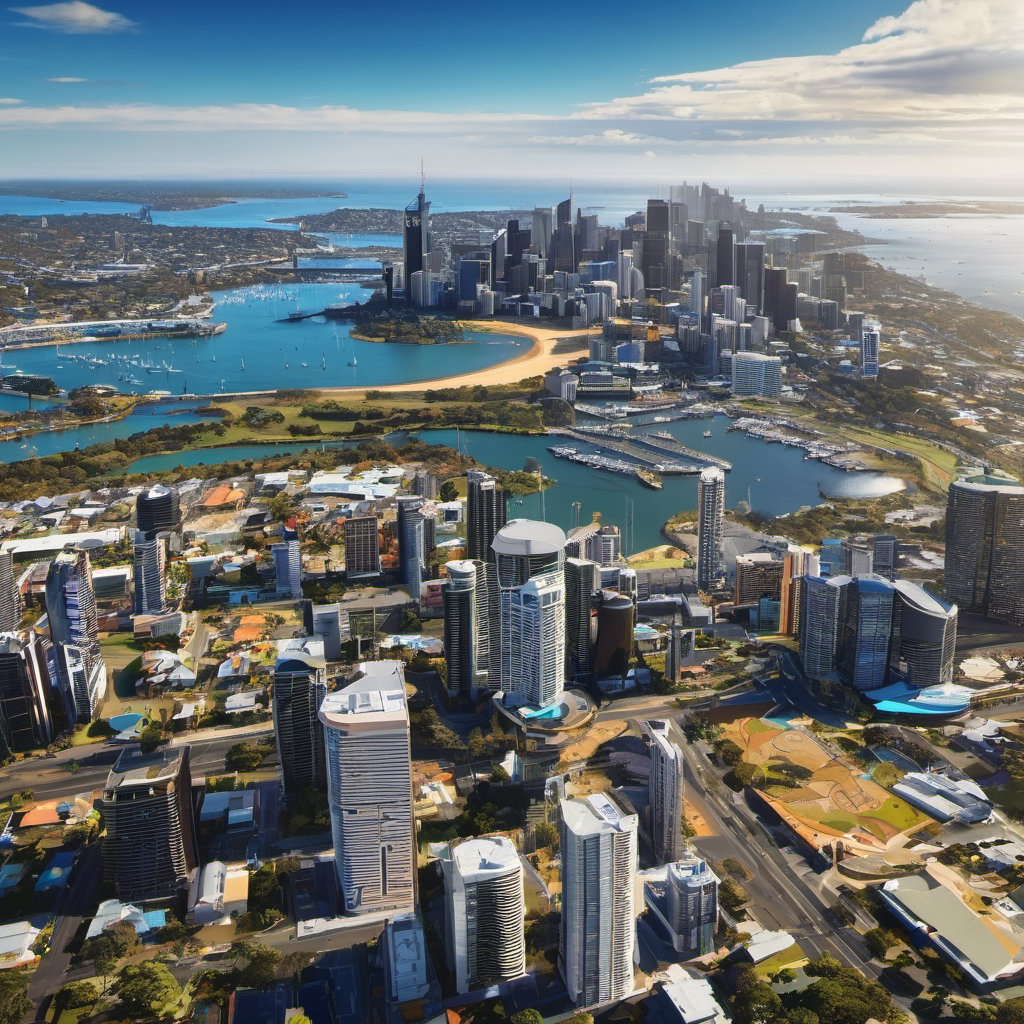
1. Hobart, Tasmania
Hobart’s appeal continues to grow, thanks to its unique blend of heritage and innovation. The city is a gateway to Tasmania’s pristine natural beauty but also boasts a vibrant arts scene, epitomized by the groundbreaking MONA (Museum of Old and New Art). The museum’s provocative exhibits and festivals, combined with the region’s burgeoning food and wine industry, make Hobart a compelling destination for 2024.
2. Margaret River, Western Australia:
Known for its premium wineries, stunning surf breaks, and tall timber forests, Margaret River is a paradise for those who appreciate the finer things in life. In 2024, it’s gaining popularity not just for its natural beauty and wines but also for its emerging gourmet food scene, with local truffles and seafood taking center stage.
3. Brisbane, Queensland:
Brisbane is stepping into the limelight as a trendsetting city, especially with events like the Brisbane 2032 Olympic and Paralympic Games on the horizon. The city’s cultural precinct, South Bank, and the recently revitalized Howard Smith Wharves offer a plethora of dining, entertainment, and cultural activities, making Brisbane an exciting urban destination.
4. Adelaide, South Australia:
Adelaide is often lauded for its liveability and vibrant festivals, and in 2024, it’s all set to captivate visitors with its blend of historic architecture, expansive parklands, and a thriving arts scene. The Adelaide Fringe and WOMADelaide are key attractions, alongside access to nearby natural wonders like Kangaroo Island and the Flinders Ranges.
5. The Whitsunday Islands, Queensland:
The Whitsunday Islands are expected to continue to be a top choice for tropical escape seekers. With improvements in eco-friendly tourism and luxury resort offerings, these islands offer a quintessential Great Barrier Reef experience, featuring white-sand beaches, crystal-clear waters, and excellent sailing opportunities.
6. Byron Bay, New South Wales:
Byron Bay has transitioned from a sleepy surf town to a bustling hotspot for travelers seeking a blend of beach life and bohemian sophistication. Its laid-back lifestyle, organic eateries, and vibrant music scene, highlighted by the annual Byron Bay Bluesfest, make it an increasingly popular destination.
7. The Kimberley, Western Australia:
The Kimberley is gaining attention for those who seek wilderness adventures. This remote region offers dramatic landscapes, including the Bungle Bungle Range, massive tidal rivers, and ancient indigenous rock art. Luxury wilderness camps and river cruises provide immersive ways to explore this largely untouched part of Australia.
8. Canberra, Australian Capital Territory:
As the nation’s capital, Canberra is trending for its rich tapestry of national monuments, museums, and galleries that offer a deep dive into Australia’s history and culture. Events like the Floriade festival, showcasing one million flowers in bloom, also attract visitors to the city.
9. The Daintree Rainforest, Queensland:
As one of the world’s oldest rainforests, the Daintree is a cornerstone for ecological and adventure tourism. With increased focus on sustainable travel, visitors in 2024 can enjoy guided walks, indigenous cultural tours, and the unique flora and fauna of this ancient rainforest.
10. Alice Springs, Northern Territory:
Positioned as a cultural and adventure hub in the heart of the Australian Outback, Alice Springs is ideal for those looking to explore the Red Centre. It’s a starting point for visits to Uluru, the MacDonnell Ranges, and a variety of Aboriginal art galleries, making it a richly rewarding destination.
Australia in 2024 offers something for everyone, from serene beaches and lush rainforests to vibrant cities bustling with culture and history. Each destination listed here provides unique experiences, ensuring that your trip to Australia will be filled with memorable adventures and insights into the diverse beauty of this vast continent.
Discovering Australia's Diverse Wildlife:
Australia is renowned for its unique and diverse wildlife, offering an array of species that are not found anywhere else on the planet. From the iconic kangaroo bounding across the open plains to the shy platypus in secluded rivers, the continent serves as a sanctuary for countless creatures that fascinate and inspire visitors from around the world.
1. Iconic Marsupials and Mammals:
Australia’s wildlife is famously dominated by marsupials, mammals that carry and nurture their young in pouches. The kangaroo, perhaps the most famous Australian animal, can be found in various types, including the red kangaroo, the largest and most powerful, and the gray kangaroo, more commonly spotted in cooler climates. Alongside kangaroos, the koala captures hearts with its gentle, sleepy nature, spending most of its life in the eucalyptus trees.
The wombat, another beloved marsupial, is known for its burrowing habits and sturdy build, while the Tasmanian devil, found only in Tasmania, intrigues visitors with its feisty nature and powerful jaw.
2. Unique Bird Species:
Australia is also a bird watcher’s paradise, home to a spectacular variety of birds from the colorful parrots to the imposing birds of prey. The cockatoo, with its flamboyant plumage and raucous call, is a common sight in both rural and urban areas. The kookaburra, famous for its laughter-like call, is a familiar presence in Australian backyards. For those venturing into the wetlands, the black swan, an emblem of Western Australia, offers a graceful display of beauty.
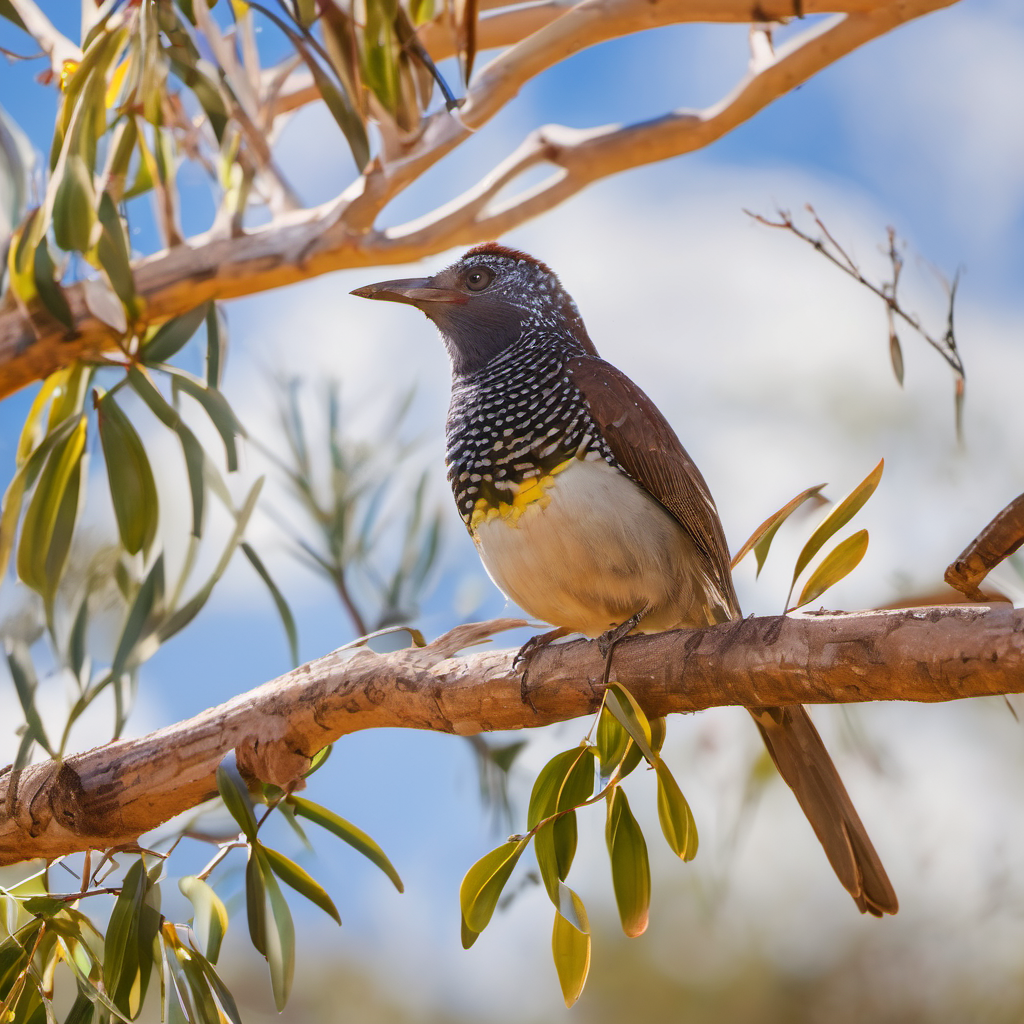
3. Reptiles and Amphibians:
The continent’s warm climate makes it a haven for a variety of reptiles and amphibians. The saltwater crocodile, residing primarily in northern Australia, is the largest reptile in the world and demands respect and caution from those sharing its habitat. On land, the frill-necked lizard is a sight to behold, especially when it spreads its frill in a display of defense. In the realm of the less daunting, geckos and skinks are common in gardens, helping control insect populations.
4. Marine Life:
Australia’s marine environments, including the vast Great Barrier Reef, are just as rich and varied as its terrestrial ecosystems. The reef is home to an impressive array of marine life, from colorful coral formations to large marine mammals like dolphins and whales. During their migration season, humpback whales can be seen off the coasts, providing spectacular viewing for whale watchers. The waters are also teeming with different species of sharks, rays, and an endless variety of fish.
5. Conservation Efforts:
Australia’s unique wildlife is under continuous threat from habitat loss, invasive species, and climate change. Conservation efforts are crucial in preserving these natural treasures. Numerous sanctuaries, national parks, and protected areas have been established to protect wildlife habitats and promote biodiversity. Recovery programs for species like the Tasmanian devil and the coral of the Great Barrier Reef are vital in these efforts, highlighting the importance of conservation and environmental management in sustaining Australia’s natural heritage.
Whether you’re gazing at a kangaroo on a dusty outback road, watching a koala in a gum tree, or snorkeling among the vivid coral and fishes of the reef, encountering Australia’s wildlife is a profound reminder of the country’s wild beauty and the critical importance of its conservation. These creatures are not just part of the landscape; they are essential characters in the story of Australia, contributing to the ecological diversity and cultural identity of the nation.
Travel Tips for Visiting Australia in 2024:
Traveling to Australia is an exciting adventure filled with potential, but it also requires some preparation to make the most of your trip. Here are some detailed travel tips to help you navigate Australia smoothly and safely in 2024:
1. Plan for the Weather:
Australia’s weather can vary dramatically depending on the region and time of year. The northern regions experience warm, tropical weather year-round, while the southern parts have distinct seasons. Be sure to check the local weather for the specific areas you plan to visit and pack accordingly. Remember that Australian summer (December to February) can be particularly hot, especially in the Outback, while winter (June to August) can be chilly in the south.
2. Understand Visa Requirements:
Most visitors will need a visa to enter Australia. There are several types of visas available, but tourists often use the Electronic Travel Authority (ETA) or an eVisitor visa, which are easy to apply for online. Ensure you understand the requirements and obtain your visa well before your planned travel date.
3. Stay Sun-Safe:
The Australian sun is particularly strong, and sun safety is a must. Always wear a broad-spectrum sunscreen with a high SPF, seek shade during the midday sun, and wear a hat and sunglasses to protect against UV rays. This is crucial not only at the beach but also during everyday outdoor activities.
4. Be Aware of Local Wildlife:
Australia is famous for its unique wildlife, but some native animals can be dangerous. Always keep a safe distance from animals like kangaroos, crocodiles, and snakes. When swimming, pay attention to shark and jellyfish warnings, and swim between the flags at patrolled beaches.
5. Embrace the Local Etiquette:
Australians are generally laid-back but appreciating local customs can enhance your experience. Tipping is not mandatory but is appreciated for good service, usually around 10% in restaurants. Also, be sure to observe local signs and rules, especially when it comes to environmental protection and public conduct.
6. Explore Beyond the Major Cities:
While cities like Sydney and Melbourne are captivating, Australia’s real charm often lies in its less-visited spots. Consider destinations like the Ningaloo Reef in Western Australia, the ancient Daintree Rainforest in Queensland, or the art and cultural rich towns of Tasmania.
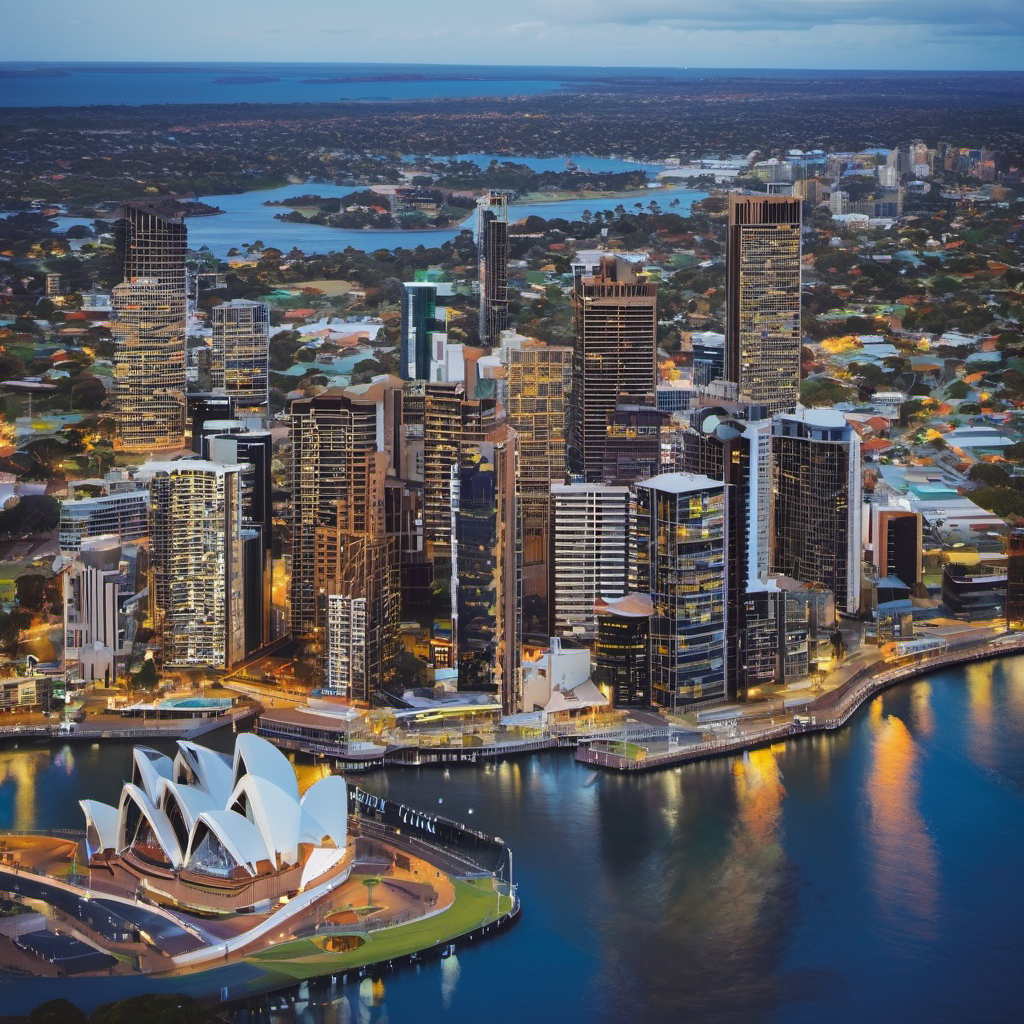
7. Use Reliable Transportation:
Australia is vast, and distances between major cities can be surprising to visitors. Plan your intercity travels with flights, and consider renting a car for more flexibility in rural and regional areas. Australia’s train network can also be a scenic and relaxing way to see the country.
8. Stay Connected:
While major cities have excellent mobile coverage, remote areas can be spotty. If you’re planning to venture into the Outback or other remote locations, consider solutions like satellite phones. Also, remember to inform someone of your travel plans, especially when undertaking activities in isolated areas.
9. Secure Comprehensive Travel Insurance:
Always have travel insurance that covers health, travel cancellaries, and any specific activities you plan to undertake, like scuba diving or hiking. Healthcare in Australia is excellent but can be costly for tourists without coverage.
10. Respect Indigenous Cultures:
Many areas of Australia are significant to Indigenous people and may have cultural sensitivities attached. Always show respect, seek permission when required, and take opportunities to engage with and learn from Indigenous communities and tours.
By following these tips, you can ensure a safe, enjoyable, and enriching trip to Australia. Whether you’re soaking up the sun on a pristine beach, exploring a bustling city, or trekking through ancient landscapes, Australia in 2024 promises to be a memorable destination
Awareness While Traveling in Australia:
Traveling to Australia offers a myriad of experiences, from exploring vibrant cities to immersing oneself in some of the world’s most breathtaking natural environments. However, being aware of certain aspects can help ensure not only your safety but also contribute positively to the sustainability and preservation of this unique destination. Here’s an expanded look at what to be aware of when visiting Australia:
1. Environmental Conservation:
Australia’s ecosystems are both delicate and unique. Travelers should be mindful of their environmental impact. Practices such as recycling, avoiding single-use plastics, sticking to marked trails while hiking, and not touching or disturbing wildlife can all contribute to conservation efforts. Especially in sensitive areas like the Great Barrier Reef, where coral is susceptible to damage, or national parks with endangered species, every little action counts.
2. Cultural Sensitivity:
Australia has a deep Indigenous heritage, and many areas, including popular tourist sites, are of cultural significance to Aboriginal and Torres Strait Islander peoples. It’s important to be respectful of these sites. Always follow guidelines, such as not climbing on sacred structures (like Uluru, which closed for climbing in 2019) and not taking photographs where prohibited. Engaging with Indigenous-led tours and businesses is also a great way to learn about traditional cultures and histories while supporting local communities.
3. Water Safety:
Australia’s beaches, rivers, and lakes are iconic but can pose risks such as strong currents, riptides, and occasionally, marine wildlife. Always swim in designated areas where lifeguards are present, and heed local warnings, including those for sharks and jellyfish, which can be prevalent in certain regions at various times of the year.
4. Fire Safety:
Bushfires are a natural part of Australia’s environment, particularly in the hotter months. When traveling in rural and forested areas, it’s crucial to be aware of fire warnings and adhere to fire bans and restrictions. This includes responsible behavior such as not lighting fires in unapproved conditions and ensuring that any campfires are fully extinguished.
5. Health Precautions:
While Australia does not have many of the infectious diseases found in other parts of the world, it’s still important to take health precautions. This includes using insect repellent to protect against mosquitoes in certain areas, being aware of the potential for ticks in bushland areas, and staying hydrated in the intense Australian sun.
6. Road Safety:
Australia’s vast distances mean that driving can involve long hours on the road. Be aware of fatigue, especially when driving in rural areas where roads can be long and monotonous. It’s also vital to be informed about local wildlife which can cross roads unexpectedly, especially at dawn and dusk. In remote areas, ensure your vehicle is well-equipped with supplies in case of breakdowns or delays.
7. Legal Compliance:
Familiarize yourself with local laws and regulations. Australia has strict quarantine laws to protect its agriculture and biodiversity. Declare all food, plant material, and animal products upon arrival. There are also strict regulations on drugs and medication; always carry a prescription for any medication you are bringing into the country.
8. Community Engagement:
Where possible, engage with local communities and small businesses. This not only provides a more authentic travel experience but also supports local economies. Opting for locally owned accommodations, restaurants, and services can help distribute tourist dollars more evenly.
9. Climate Change Awareness:
Lastly, as a nation acutely aware of the impacts of climate change, consider how you can minimize your carbon footprint while traveling. This might include choosing less carbon-intensive transportation options, participating in carbon offset programs, and selecting eco-friendly tours and accommodations.
By staying informed and conscious of these aspects, travelers to Australia can enjoy a fulfilling and responsible journey, preserving the natural beauty and cultural integrity of this incredible country for future visitors Australia is easy to love but also vast and varied:
Slip, slop, slap—slip on a shirt, slop on sunscreen, and slap on a hat.
Watch for wildlife, learn the surf flags, and always keep a bottle of water handy to beat the heat.




